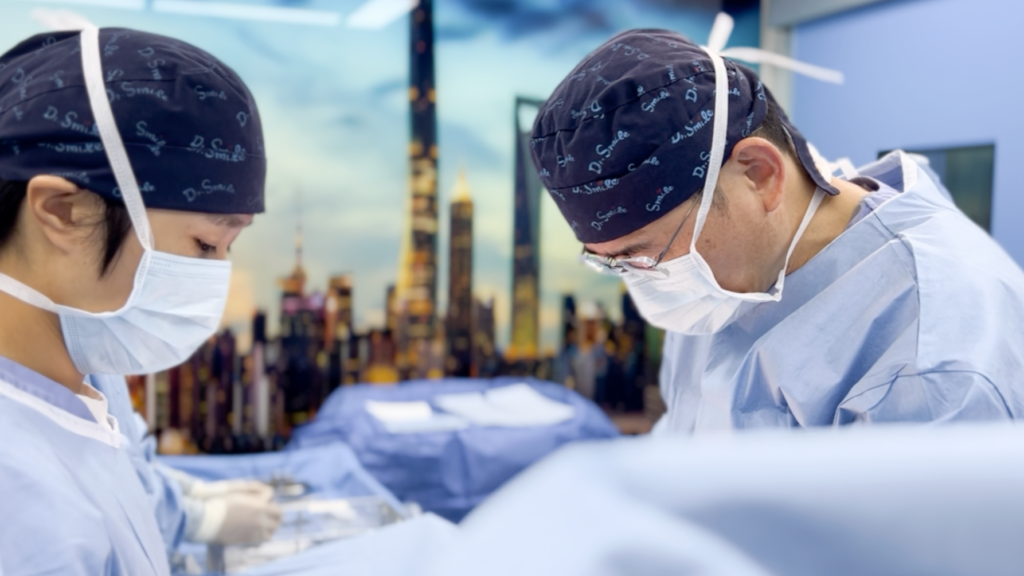Originally contributed by Dr. Qiang Zhang on the Veinsights . Original Link: https://veinsights.blogspot.com/2024/10/the-impact-of-non-absorbable-silk.html

The saphenofemoral junction (SFJ) is a crucial anatomical site in the treatment of varicose veins. CHIVA (Conservative and Hemodynamic Cure of Venous Insufficiency in Outpatient Care) is an advanced, conservative treatment method for varicose veins that aims to preserve and redirect blood flow without removing the affected veins, avoiding the destruction associated with traditional vein stripping surgery.
However, in clinical practice, some patients experience recurrence after CHIVA treatment. One potential reason for recurrence is reopening of the SFJ after ligation with non-absorbable sutures. This article explores the mechanisms behind this recurrence and its impact on the effectiveness of CHIVA.
What is CHIVA?
CHIVA is a surgical technique that aims to preserve venous function by redirecting blood flow through hemodynamic assessment under ultrasound guidance. By maintaining functional veins and reducing the pressure in affected regions, CHIVA offers a less invasive alternative to traditional vein stripping, leading to faster recovery and minimal damage to healthy veins.
Risks of Non-Absorbable Sutures in SFJ Ligation
In some CHIVA procedures, non-absorbable sutures are used to ligate the SFJ to prevent abnormal reflux into the great saphenous vein. However, the use of these sutures can lead to several issues, especially regarding long-term outcomes, including varicose vein recurrence.
The goal of non-absorbable sutures is to permanently block abnormal blood flow and maintain the efficacy of the surgery. However, clinical observations have shown that some non-absorbable sutures at the SFJ may reopen over time, leading to recurrence of varicose veins. This may be due to the fact that so-called “non-absorbable” sutures are not entirely resistant to changes within the body. Over time, some non-absorbable materials may alter, losing their initial fixation, which can lead to reopening of the ligated area.
Furthermore, as indicated in the usage instructions for some non-absorbable sutures, these sutures may gradually integrate with tissue and could be partially absorbed, which deviates from their intended permanent fixation. Such characteristics may cause loosening and reopening of the ligation point, increasing the risk of recurrence after CHIVA treatment.
Non-Absorbable Sutures vs. Prolene Vascular Sutures
- Strength Durability
- Prolene sutures (made of polypropylene) maintain their strength over time within the body, making them ideal for vascular ligation and other areas requiring long-term stability. In contrast, some non-absorbable sutures may gradually lose strength, leading to loosening of the ligation and reopening of the site.
- Degradability
- Non-absorbable sutures degrade very slowly in the body. However, compared to Prolene, some non-absorbable sutures may become brittle under physiological conditions, whereas Prolene is highly resistant to degradation and brittleness. This makes Prolene a preferable choice for maintaining long-term ligation efficacy.
How to Address Reopening of Ligated SFJ?
To reduce the risk of recurrence after CHIVA treatment, careful consideration should be given to the choice of ligation materials and techniques for the SFJ. Although non-absorbable sutures are intended for permanent occlusion, not all materials can achieve this effect in practice. The following measures may help:
- Use More Reliable Non-Absorbable Materials
- When selecting non-absorbable sutures, ensure that the material is highly stable and durable within the body to reduce the risk of reopening. For example, Prolene sutures, known for their high strength and durability, may be a better option.
- Increase the Strength of Fixation
- During ligation, adding additional layers of sutures or using other fixation methods may enhance stability, reducing the risk of suture loosening or migration within the body.
- Regular Ultrasound Follow-Up
- Regular ultrasound follow-up after CHIVA treatment is essential to detect any signs of reopening at the SFJ early. Timely intervention can prevent the progression of varicose veins and improve long-term outcomes.
Recommendations for Prevention and Improvement
- Accurate Hemodynamic Assessment
- The success of CHIVA surgery depends on an accurate hemodynamic assessment and guidance. During preoperative ultrasound, the physician should clearly identify venous pressure and reflux pathways to ensure that the surgery achieves optimal redistribution of blood flow.
- Use More Stable Ligation Materials
- When ligating veins, preference should be given to materials that have been clinically proven for long-term stability in the body, thereby reducing the impact of permanent obstruction on blood flow.
- Standardized Training in Surgical Techniques
- CHIVA surgery requires a high level of skill from the physician. It is recommended that physicians performing CHIVA undergo systematic hemodynamic training, especially in the selection of materials and ligation techniques, to ensure that every step aligns with the conservative principles of CHIVA.
Conclusion
The reopening of SFJ after ligation with non-absorbable sutures is an important factor contributing to recurrence after CHIVA treatment. This issue may be related to the long-term stability of the ligation materials used. To ensure the long-term success of CHIVA treatment, careful selection of ligation materials, scientific hemodynamic assessment, standardized surgical procedures, and regular postoperative follow-up are essential to reduce recurrence risk. Prolene sutures, with their high durability and stability within the body, may be a more suitable choice for this purpose. As the global CHIVA training program continues to expand, it is hoped that more physicians will master this technique, thereby reducing unnecessary recurrences and providing better treatment outcomes for patients with varicose veins.